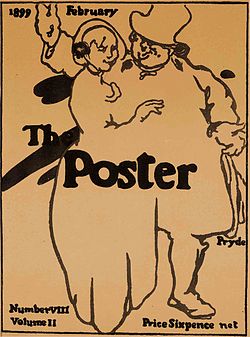 James Pryde, cover for The Poster, February 1899 | |
| Frequency | Monthly |
|---|---|
| First issue | June 1898 |
| Final issue | December 1900 |
| Country | United Kingdom |
| Based in | London |

The Poster: an illustrated monthly chronicle, or simply The Poster, was a monthly magazine published in London from June 1898 to December 1900, dedicated to the then relatively new art of the pictorial poster. It was the first periodical devoted to the poster to be published in Britain. [2] It was published by Ransom, Woestyn & Co. [3]